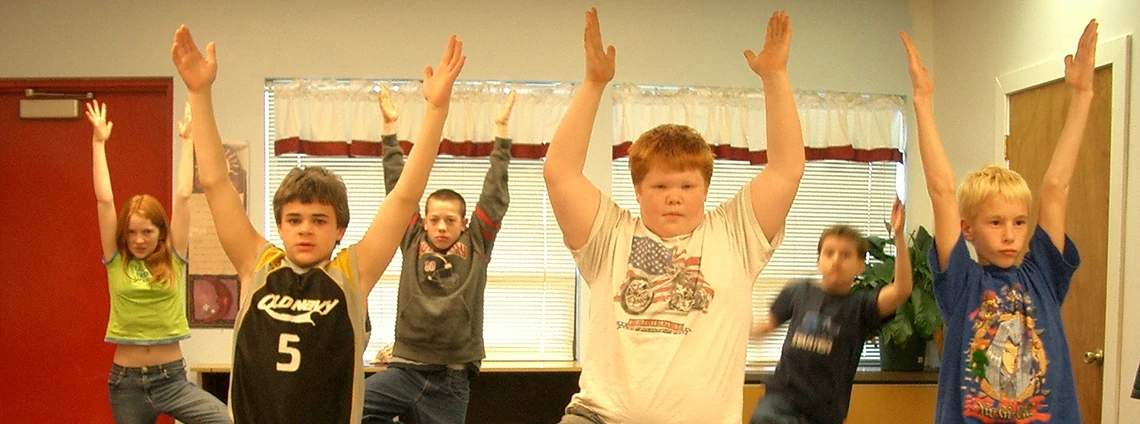A pioneer in children’s yoga, Yoga Calm came to life in the behavior classroom of a high poverty school in rural Oregon twenty-two years ago, where counselor Lynea Gillen observed how hard it was for students to simply sit in a group together and share. She felt they needed opportunities to manage and direct their strong feelings and impulses.
One day, she saw a young boy day crouch under a table in a fetal position and scream, “Help me! Can anyone please help me?!” His pain was obvious. She wanted to help him find peace in his small body. She could see the trauma he physically held, how his instinct to protect himself drove him under the table – a common way for wounded children to self-soothe.
Through her own yoga and counseling, Lynea had learned to listen to the body and the heart to find a path toward healing. When the body opens, emotions can be released, and the body and heart grow strong together. She believed that a practice that was both physically and emotionally supportive could help these boys and others like them.
The result was the one-of-a-kind integration of physical yoga, mindfulness practice, and social-emotional learning (SEL) activities, each part supporting and reinforcing the others.
Yoga Calm for Children & Teens
Of course, it’s not just kids with trauma or behavioral disorders or mental health issues who can benefit from Yoga Calm. Its practices, processes, and principles can benefit all students – as well as the adults who share Yoga Calm with them.
It’s no secret that today’s kids are more stressed out than ever. Sedentary screen time – often with overstimulating media – is up, physical activity is down. Reduced parent time, overscheduling, and increased academic expectations take their toll. Sleep loss and poor diets are epidemic.
The tools and skills that Yoga Calm nurtures provide the resilience and “grit” that more and more educators agree is key to children’s success, both in school and after graduation. But it’s more than just grit. Or attitude. Or a growth mindset. Or leadership skills.
It’s emotional intelligence. It’s resources for thriving.
Yoga Calm…
- Develops self-regulation and relaxation skills.
- Promotes mindfulness, physical activity, and social/emotional skill development.
- Improves subject retention and test scores through greater focus and concentration.
- Boosts self-confidence and self-esteem, enhancing communication, trust, empathy, teamwork, and leadership skills.
- Supports the ability to make healthy life choices to create lifelong wellness habits.
Research Supported, Teacher Approved
Recent advances in neuroscience validate the importance of whole-child education – and challenge our current over-emphasis toward cognitive and pharmacological approaches in education and therapy:
- Physical movement has been proven to reduce stress and anxiety, stimulate brain growth and neural connectivity (neuroplasticity), and improve cognition and academic achievement. Patterned, relational, repetitive and rewarding moment practices are being recognized as more effective than cognitive approaches for children under stress and affected by trauma..
- Mindfulness research suggests that sustained practice can enhance attentional and emotional self-regulation and promote cognitive flexibility. Both staff and youth benefit.
- Emotion is a powerful vehicle for enhancing or inhibiting learning. When individuals connect cognition and emotion and adopt a “meaning mind-set” – seeking connections, giving to others, orienting to a larger purpose – clear benefits can result, including improved psychological well-being, more creativity and enhanced work performance.
Imagination, positive thinking and cognitive flexibility are key tools for dealing with life’s stressors, creating solutions, developing resiliency and encouraging joy.
Today, Yoga Calm is used by thousands of teachers, counselors, therapists, health professionals, and parents around the globe, benefitting hundreds of thousands of students.
Through the application of activities that engage the heart, mind and body, we can help our youth to thrive in the 21st century.

